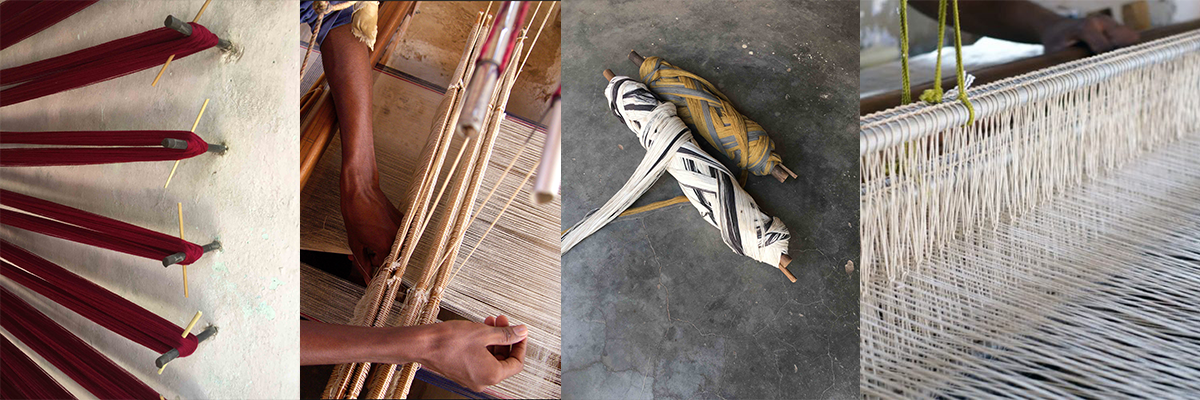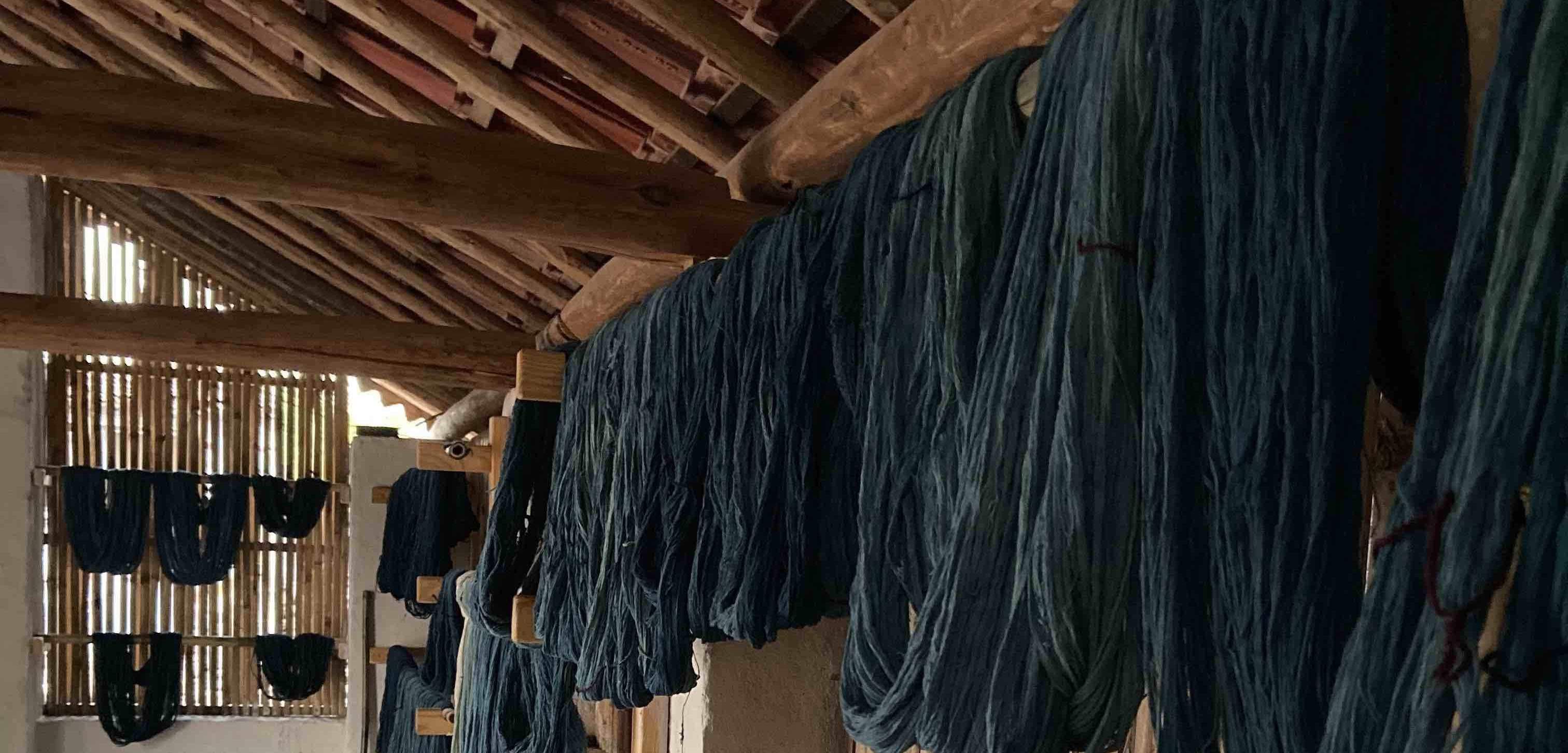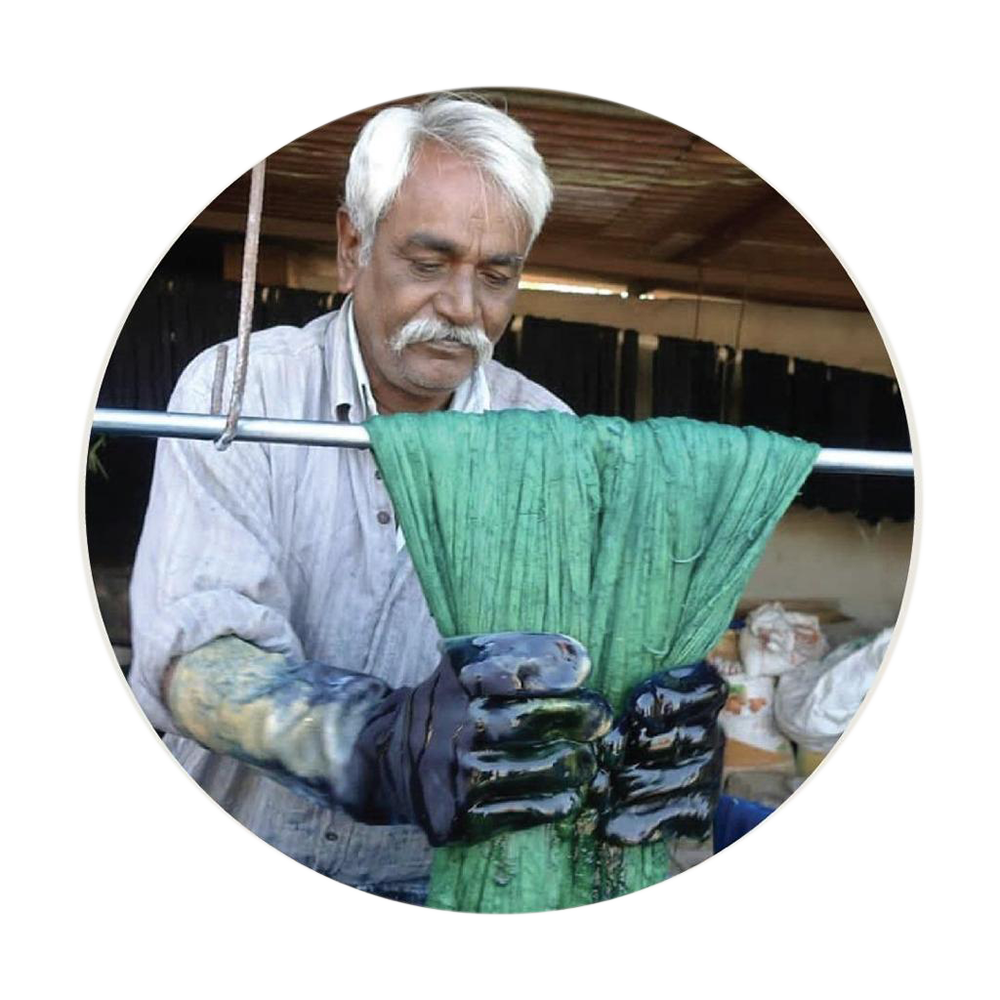Desi cotton strains are indigenous to Asia and Africa and have a short staple length of less than 32mm. Wagad cotton is one of 20 strains of desi cotton that were once grown extensively in India. Wagad Cotton is indigenous to Kachchh and is one of the few genetically pure cotton species remaining in India.
In fact, around the time of the Indian independence, the ratio of desi cotton to American cotton was 97:3. However, desi cotton (and with it, kala cotton) was relegated to the bottom of the textile hierarchy during colonization in India. Consequently, today the ratio has flipped. Desi cotton has reduced to just about 3 percent.
Wagad cotton was branded as “Kala cotton” in 2010-11. The name 'kala' means cotton pod — the core of the cotton.
Water Efficient
As a crop, kala cotton is rain-fed and therefore water efficient. Studies have shown that approximately 1400 litres of irrigated water are required to grow one kilogram of other types of cotton. Kala is completely rain-fed and grows easily even in the arid, drought-prone areas of Kutch where there is less than 40 cm of rainfall.
Organic and Sustainable
It does not need to be sprayed with pesticides and fertilizers since it is resistant to pests- making it an excellent organic and sustainable crop to cultivate. This also means that it creates healthier soil.
Energy Efficient
While irrigated cotton in Gujarat generates 0.63% of greenhouse gases, other rain-fed hybrids in Gujarat generate 0.58% and Kala cotton in Kutch generates 0.11%, demonstrating that Kala cotton production in Kutch is among the most energy-efficient and carbon-neutral in the world.

Raw cotton is converted into hand-woven textiles by weaving and spinning. The demand for kala cotton as a raw fibre is limited in the textile industry because of the challenges it brings in spinning and weaving fabric from it. Spinning of Kala cotton yarn is undertaken on a hand-operated charkha. From a weaving standpoint, it is laborious because of its short staple length (~4 cm), but the textile produced is strong, soft to touch and tenacious.

If the artisan chooses to make coloured fabrics or designed fabrics, they need to dye the threads.
Kala cotton actually known to takes dye brilliantly. The colours chosen are usually all plant-based from a plant named “Indigo”. This makes the dye organic as well. The word Indigo comes from the Greek word Indikon - blue dye from India. Indigo in Kachchh has always been a source of pride to the people who wear it. The cooling property of that deep blue is irresistible under the harsh sun of the Rann. Further, kutch artisans use organic products like cow dung and urine to solidify and maintain the colour.

Family of Khengar Siju is a family of weavers, natural dyers and spinners of Bhujodi village. Bhujodi is hub of handicraft activities in Kutch. Khengarbhai learnt craft skills from his father and became an expert weaver and expert in hsi tradition at very early age. The weaving at that time was done for local communities. He was making various hand woven pieces and selling them to local communities. He further inculcated his skills, value system and philosophy to his son.
Khengarbhai is active master dyer and weaver. He holds expertise in natural dyeing and runs the dyeing unit in service of artisans of Kutch He experiments with many local materials and discover many new colours and technique. He also groomed his son in this tradition
Kala Cotton is a soft fabric by nature and it gets softer & Whiter with every wash.
Therefore, our cotton is breathable and gentle on the skin!




